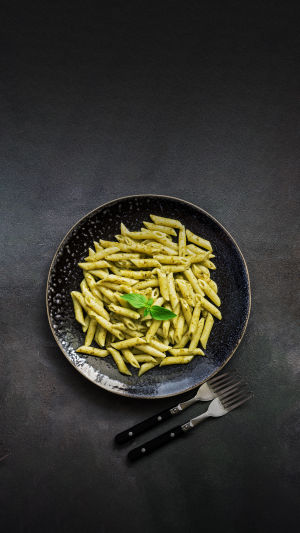Pasta, a beloved staple in many cuisines around the world, has a rich history that spans centuries and continents.
While its exact origin is still a subject of debate among historians, one thing is certain: pasta has played a significant role in the culinary traditions of various cultures.
The origins of pasta can be traced back to ancient civilizations. Some believe that the concept of pasta was born in China, where noodles made from wheat or rice flour have been consumed for thousands of years. These early forms of noodles eventually found their way to the Middle East and Mediterranean regions through trade routes.
In ancient Greece and Rome, pasta-like dishes made from barley or wheat flour were already common. However, it was during the Arab conquest of Sicily in the 9th century that durum wheat, the key ingredient in modern pasta, was introduced to Italy.
The Italians embraced this new ingredient and began experimenting with different shapes and recipes, laying the foundation for their rich pasta culture.
Over the centuries, pasta evolved and diversified across Italy. Each region developed its unique pasta shapes and styles. From the long and thin spaghetti of Naples to the ridged rigatoni of Rome, the variety of pasta became a reflection of regional pride and creativity.
Pasta gained popularity outside of Italy during the Renaissance when explorers and traders brought it to different parts of Europe. The ease of preservation and cooking made pasta an ideal food for long sea voyages. By the 18th century, pasta had become a common ingredient in the diets of many European countries, including France, Germany, and England.
In the late 19th century, Italian immigrants brought their pasta-making traditions to the United States, where it quickly became a cherished part of the American culinary landscape. Today, pasta is enjoyed in countless forms and preparations worldwide, with each culture adding its unique twist.
Keys to Making Good Pasta: The Art of Cooking Al Dente
While the history of pasta is fascinating, the key to making good pasta lies in the cooking process itself. Here are a few essential tips to ensure your pasta turns out perfectly:
1. Choose the Right Pasta: Different pasta shapes are suited to different sauces and dishes. Consider the thickness, texture, and shape of the pasta when selecting the appropriate type for your recipe.
2. Use Ample Salted Water: Boil pasta in a large pot of well-salted water. The salt adds flavor to the pasta and helps season it throughout.
3. Cook Al Dente: Al dente, meaning "to the tooth" in Italian, refers to pasta that is cooked until it is still firm when bitten. Achieving this texture is crucial for a good pasta dish. Follow the cooking time instructions on the package as a general guideline, but taste the pasta a minute or two before the recommended time to ensure it is cooked to your preference.
4. Maintain the Texture: To stop the cooking process and prevent overcooking, drain the pasta immediately and rinse it with cold water only when using it in cold pasta salads. For hot dishes, add the drained pasta directly to the sauce to finish cooking and absorb the flavors.
5. Save Pasta Water: Before draining the pasta, reserve a cup of the starchy pasta water. It can be used to thin out sauces, enhance flavors, or help bind the sauce to the pasta.
6. Match Sauce to Pasta Shape: Pairing the right sauce with the appropriate pasta shape can make a world of difference in the overall taste and enjoyment of the dish. Thicker, textured sauces go well with ridged or tube-shaped pasta, while thinner, oil-based sauces are better suited for long, thin noodles.
7. Experiment with Ingredients: Pasta dishes offer endless possibilities for creativity. Play with different ingredients, herbs, and spices to add depth and complexity to your sauce. Don't be afraid to try new flavor combinations and techniques.
By understanding the history and origins of pasta and following these key principles, you can elevate your pasta dishes to new heights and appreciate the cultural significance of this timeless culinary treasure.





